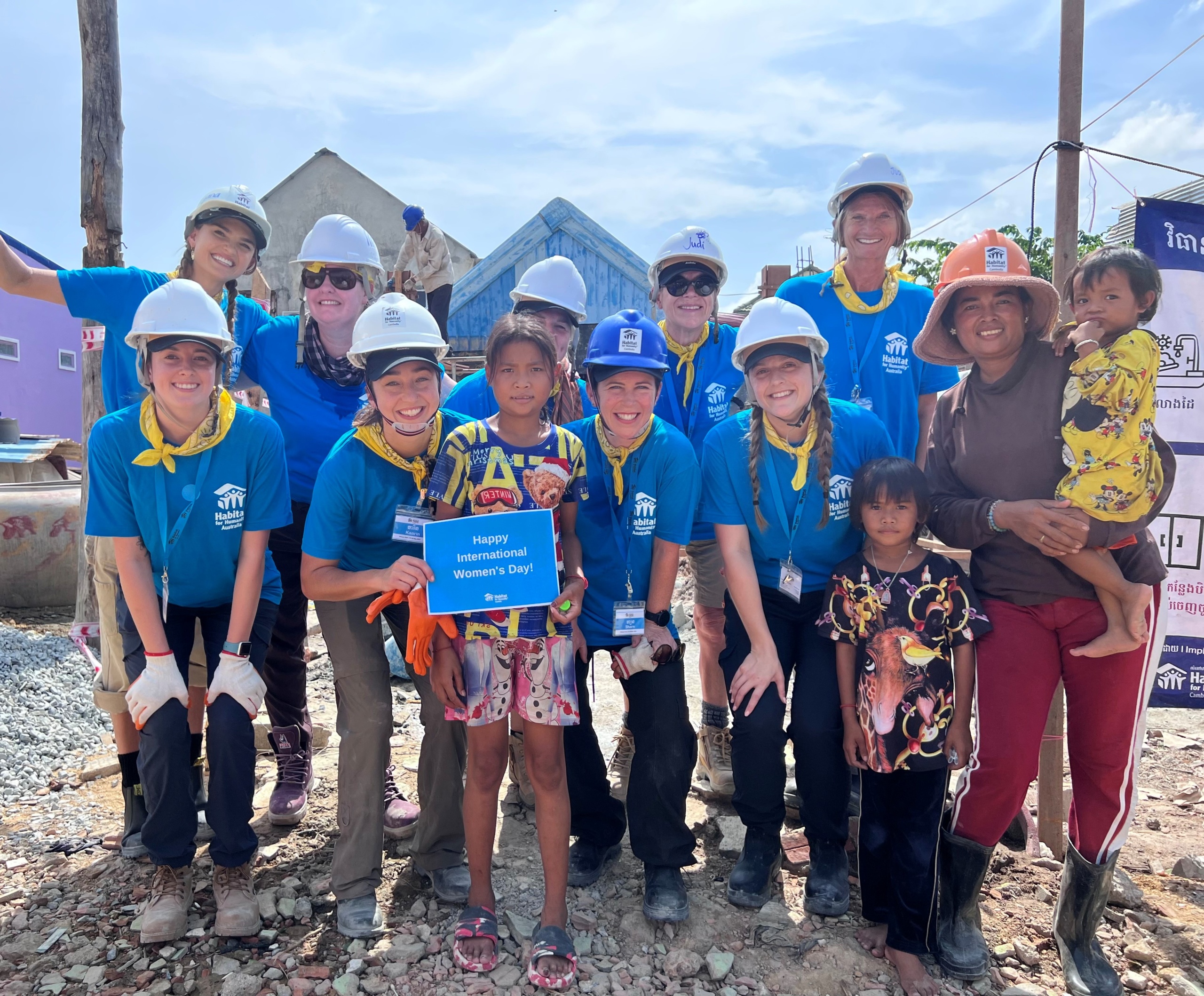It’s International Women’s Day and today we recognise, celebrate and support women in Australia, the Asia Pacific region and all around the world.
We would like to take a moment to thank the fantastic women we work with; our volunteers, partners, staff, community members and of course, you – our committed and generous supporters.
International Women’s Day was established over a hundred years ago and remains an important movement to advance women’s equality – this day belongs to everyone. We believe in advocating for and working alongside women to strive for gender inclusion and parity every day of the year.
Before we share with you the work you make possible to support women globally, we thought we’d share a few statistics that we’re acknowledging today.
We understand that statistics about domestic violence can be upsetting, so if you’d prefer not to read these, please scroll past the image below.
- Domestic violence is the biggest cause of homelessness for Australian women.
- As of 2021, an estimated 1,410 women experienced homelessness on any given night in Australia.
- In 2019 there had been an 88% growth in women over 55 years accessing homelessness services over the previous three years in NSW
- Globally 81,000 women and girls were killed in 2020, around 47,000 of them (58 per cent) died at the hands of an intimate partner or a family member, which equals to a woman or girl being killed every 11 minutes in their home.
- Currently women only make up 11% of the construction industry workforce and less than 3% of trades.
- Every industry and almost three-quarters (73%) of employers have a gender pay gap of larger than 5% in favour of men. Construction has the highest gender pay gap, with an average gender pay gap of 28.3% and a median gender pay gap of 31.8%.
- We could add $128 billion to the economy through boosting women’s workforce participation and productivity growth if we tackle the factors holding women back.

We are committed to positive change.
How Habitat Australia are supporting women, 365 days of the year.
Brush with Kindness
Fleeing domestic violence has many layers of complexity but being able to provide a woman and her children with a home that’s recently been refreshed tells the family that they’re valued. This makes an important impact at a time when they may need, and deserve, reassurance. Living in safe and secure housing, which is comfortable and clean, gives them the opportunity to recover, prepare and plan for a brighter future. We’re partnering with corporates throughout March to facilitate Brush with Kindness activity for IWD at both domestic violence shelters and community-based organisations that provide support and services to women of all ages.
Domestic violence shelter
Thanks to the Safe Places grant from the Australian government, we have nearly completed the build of our first domestic violence shelter in partnership with DV West. This safe accommodation in Western Sydney hopes to house over 100 women and children a year. This shelter will be available for indigenous women and children should they need to leave an unsafe situation. We have also started the planning process for our second domestic violence shelter, and have requested funding for a third, also in Sydney. This project is supported by the Australian Government Department of Social Services.
Habitat Women
In March our fifth and sixth cohorts of women will begin training as part of the Habitat Women program. There are vast disparities regarding genders in the construction industry, so we empower women through comprehensive practical training within construction and maintenance, building confidence and skills, and creating employment pathways in the industry.
Global Village
In Cambodia, poverty affects women’s health and reduces opportunities for further education, community involvement and leisure. Although the burden of unpaid care and domestic work is one of the biggest obstacles to gender equity in Cambodia, it is seldom addressed by public policies or development efforts. This International Women’s Day, Habitat Australia and 38 enthusiastic volunteers will be building safe shelter for, and alongside, women in Siem Reap.
Land Rights for Women
In Nepal, in the event of separation, divorce or widowhood, women are often left landless and homeless. We have been supporting women in Nepal to fight this injustice through training sessions that provide the information they need to make a legal claim to their land. So far 27 households have secured joint-land title in the name of both wife and husband.
Water for Women
Water for Women was a successful project in Fiji which strengthened community resilience and inclusion through improved WASH (water, sanitation & hygiene) services. The activities challenged mindsets and supported women into leadership roles, resulting in an increase in the number of women in decision-making roles within the water committees, supported by key leaders in the communities.
Gender and Child Protection training Bangladesh
Habitat for Humanity conducted a training session focusing on Gender and Child Protection with the goal of eradicating violence, abuse and exploitation of women and children in the community. The training was attended by 25 people, including 17 women and 8 men and focused on topics such as safeguarding, gender discrimination, female empowerment, children’s rights and more. Steps have been taken at an organisational level since this training, to address gender across the Asia Pacific in both Nepal and Vietnam.
Gender sensitivity training
Training has been delivered to various community action groups in Cambodia, to promote women’s leadership and help ensure that the needs of females are addressed.
Together we can all help forge women’s equality, and when we inspire others to understand and value women’s inclusion, we forge a better world.
Thank you for your ongoing support.
Would you like to read more about what we do? Please view our other blogs for more information on our projects both here in Australia and in the Asia Pacific region.
If you’d like to read more about the International Women’s Day movement, please click here.



